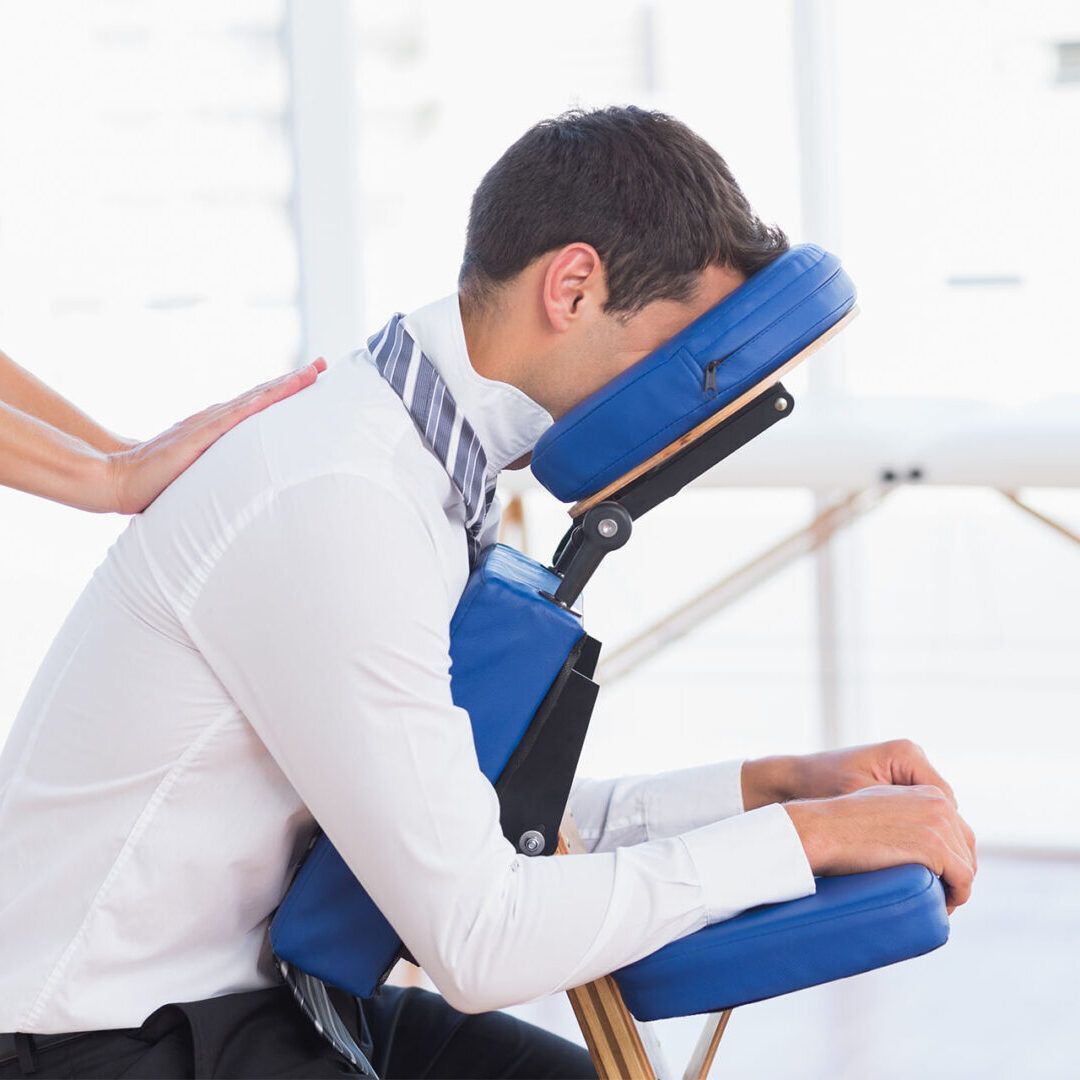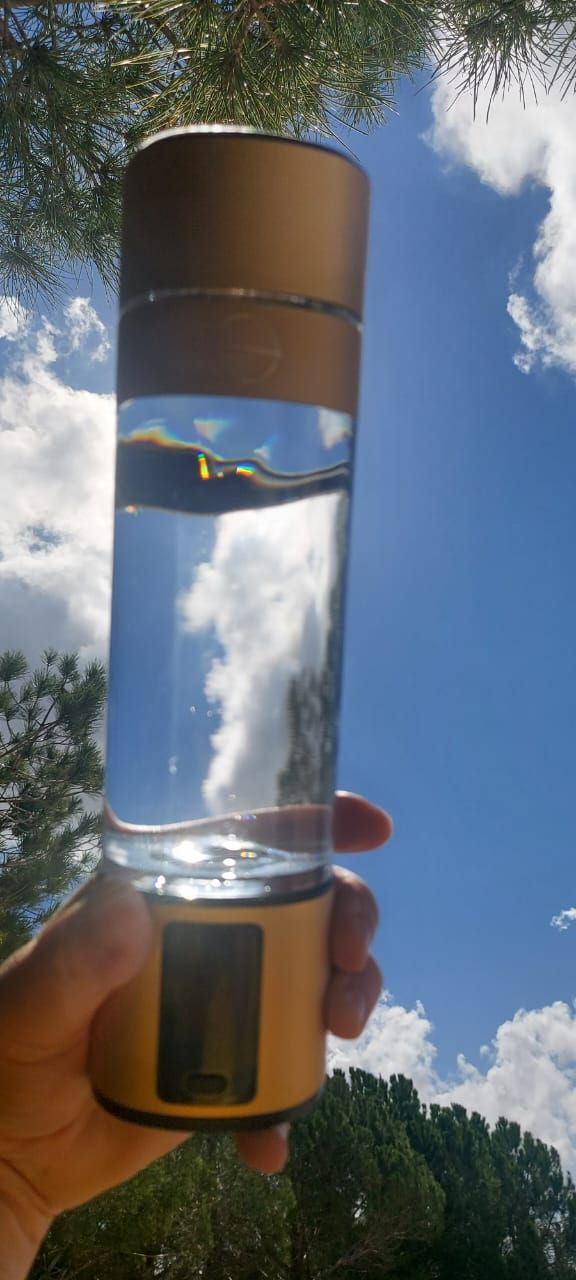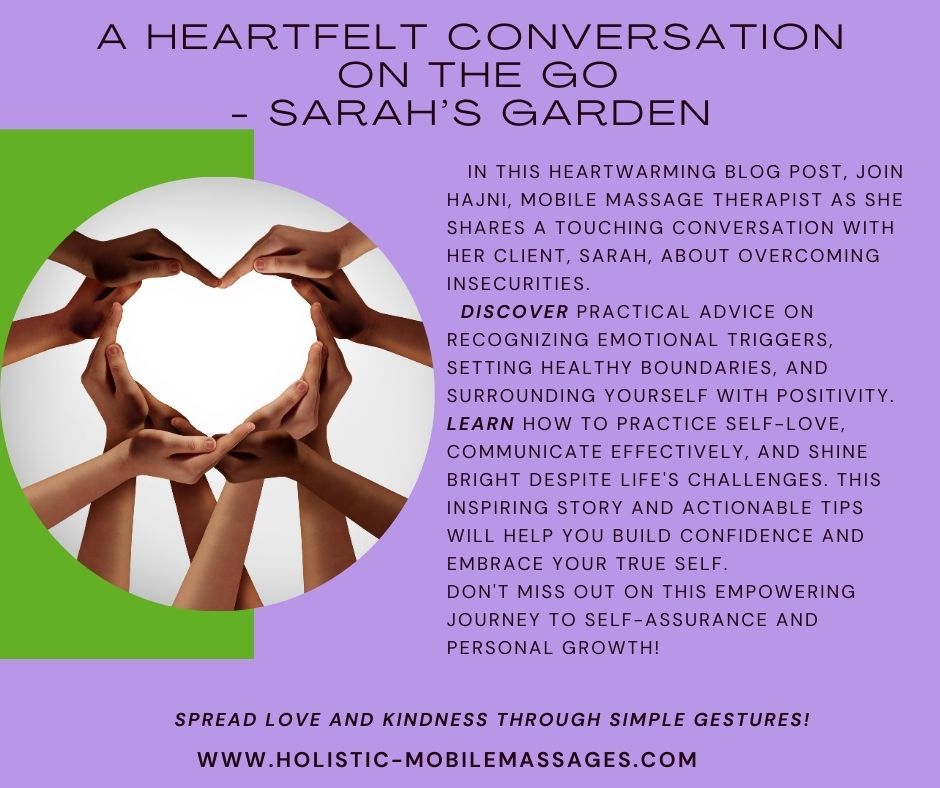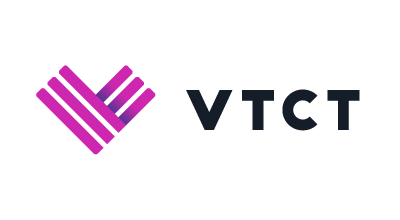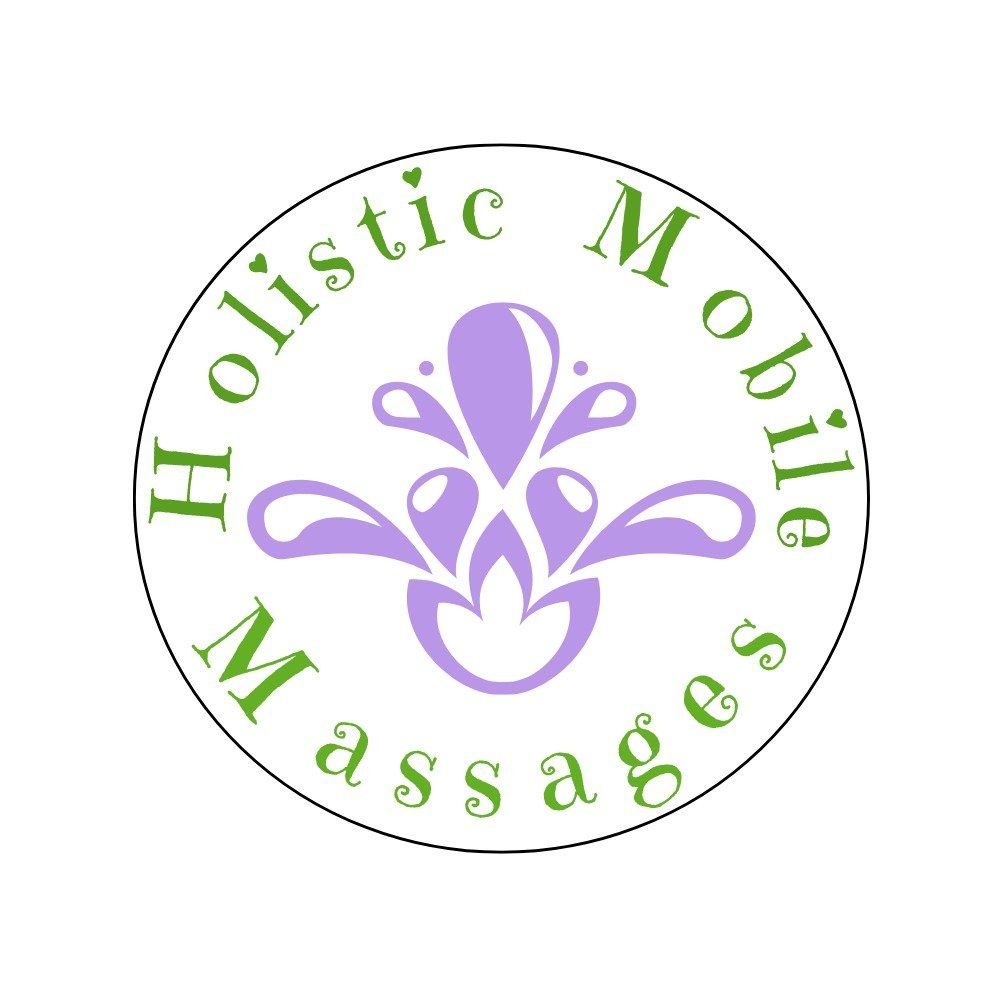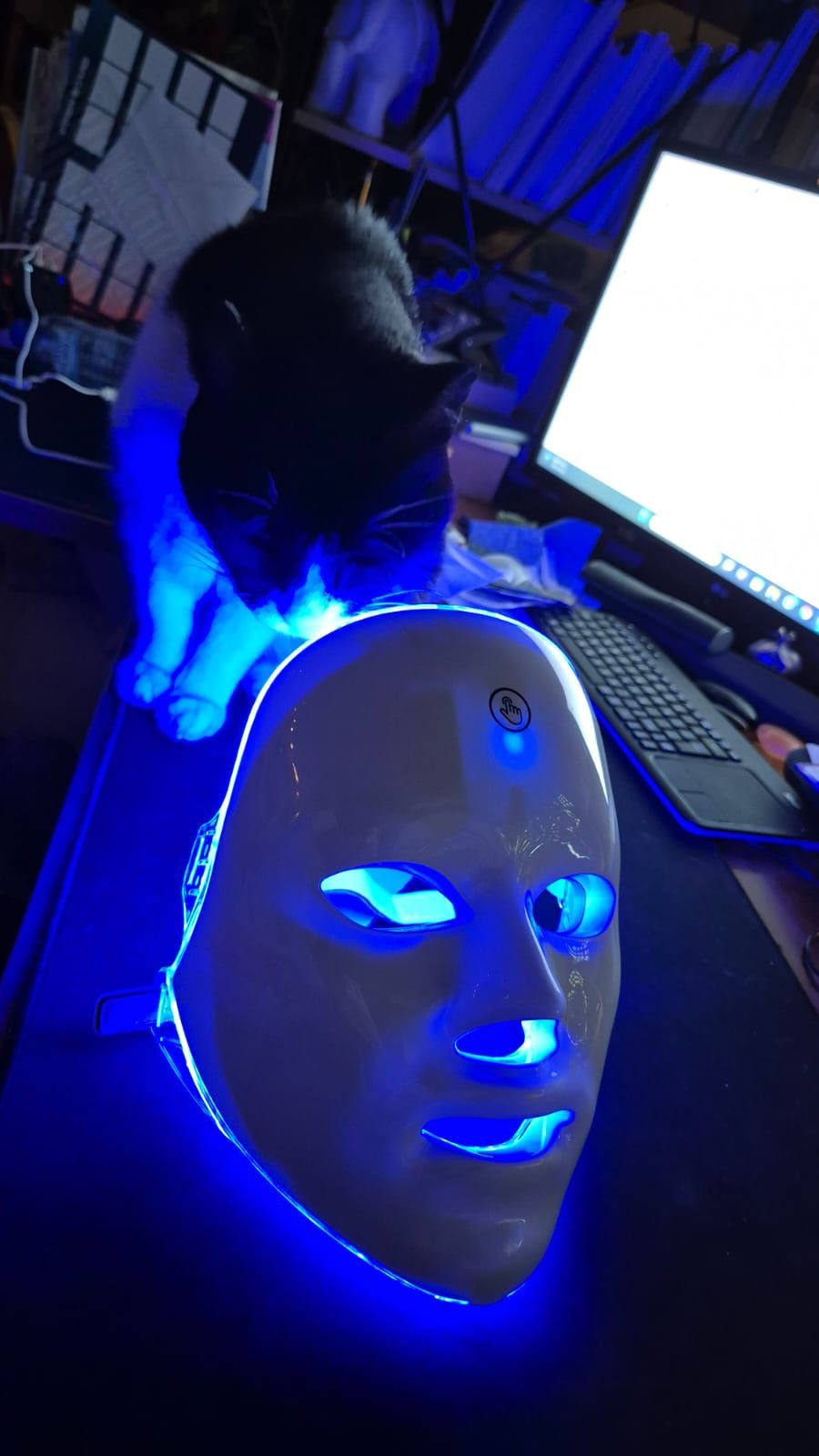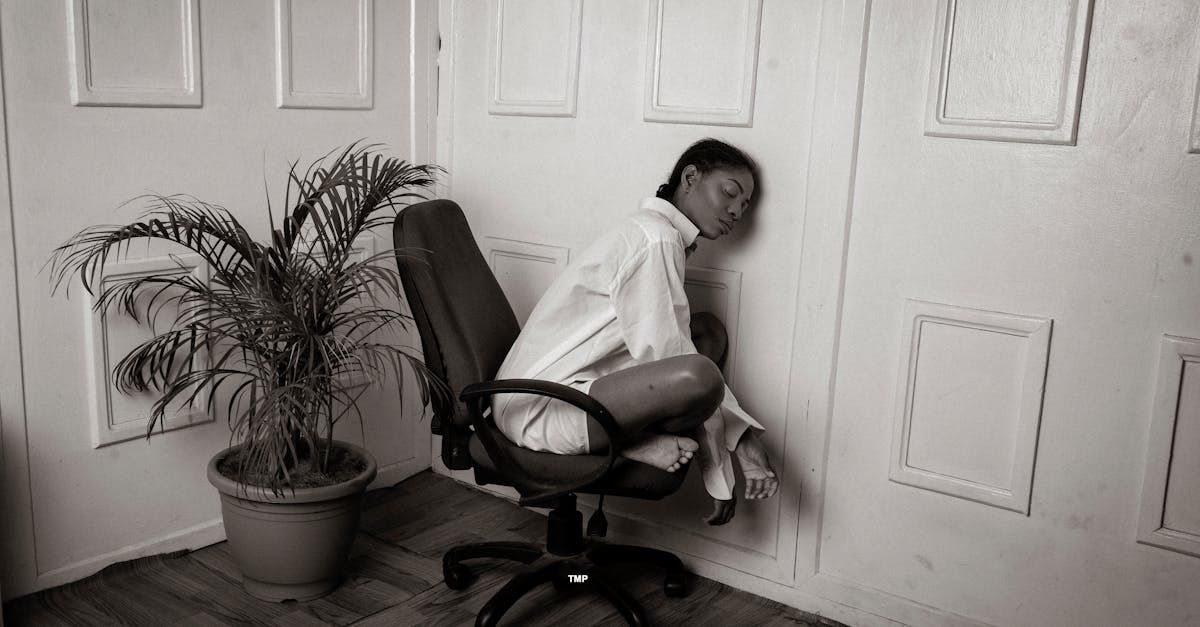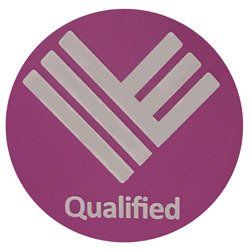Massage Therapy for Stress Reduction in Healthcare Professionals
Focus on the importance of self-care for healthcare providers and how massage therapy can mitigate stress, burnout, ultimately benefiting patient care
1. Abstract
From a massage therapist's point of view, working in a palliative care hospice setting presents a unique set of challenges and opportunities. In this environment, the mental well-being of healthcare staff is of utmost importance, not only for their personal welfare but also for the quality of care and services they provide. Massage therapy plays a vital role in addressing these concerns.
Palliative care hospice staff often experience compassion fatigue, stress, and emotional burnout due to the demanding nature of their work. The power of touch and the relaxation provided by massage therapy can help alleviate these emotional burdens. Regular massages offer a proactive approach to stress management, promoting relaxation and reducing stress levels. They provide a safe space for staff to release pent-up emotions and tension, which is essential in a highly emotional and demanding healthcare environment.
Furthermore, massage therapy contributes to the physical well-being of the staff by reducing muscle tension and promoting better sleep, both of which are crucial for maintaining overall health and preventing sick days. Staff members who are physically and mentally well are better equipped to provide compassionate care, make sound decisions, and communicate effectively with patients and their families.
By incorporating massage therapy into the staff wellness program, the hospice demonstrates a commitment to self-care and emotional support. This not only reduces sick days but also fosters a culture of well-being. Ultimately, the positive impact on staff well-being directly translates to improved patient care, higher satisfaction levels among patients and families, and a more harmonious work environment. In the world of palliative care, the healing power of touch is not limited to patients; it extends to the dedicated staff who provide care, making a substantial difference in the overall quality of the hospice's services.
2.Introduction
Healthcare professionals play a crucial role in providing essential medical care to patients, but their demanding and often emotionally taxing job can lead to significant stress and burnout. Stress and burnout in healthcare providers not only affects their own well-being but can also have a direct impact on patient care. Recognizing the importance of self-care for healthcare professionals is essential to mitigate stress and ensure the delivery of high-quality patient care. One effective method for stress reduction in healthcare providers is massage therapy, which can have a profound positive impact on both their physical and mental well-being, ultimately benefiting patient care.
This case study is taking place in the Archangel Michael Hospice, established in 2015, located in Mesa Chorio, Pafos, Cyprus. The hospice offers free palliative care for people with any life-limiting condition including cancer and other serious illnesses such as Motor Neurone Disease, heart failure, end-stage respiratory and kidney disease, end of life care. It is also the only facility in Cyprus that is specifically designed to offer palliative care to children. Has no religious denomination, race, sex, age or belief system, everyone in need is welcomed equally.
For more information, please visit: https://www.archangel-michael-hospice.com/
The massage treatments are part of the “care for the carer” program, which consists in offering the staff and volunteers 30 minutes of chair massage once or twice a week, by a Hajni, a professional massage therapist and Maria, NHS retired nurse. The program started in 2019, unfortunately was partially suspended during the Covid-19 pandemic and was fully resumed end of 2022 and is still offered today. The team offering the massage treatments are volunteers and the time allocated to the massage sessions are not considered as the regular breaks the nursing staff is entitled too, so there is an extra investment from the establishment regarding the time off allocated for the nursing staff.
There is a general average of 3 sessions/day, once or twice /week, as it depends on the workload of the staff and the days events. For security and anonymity reasons we are using a coded intake process, where each person is allocated a number, during the initial consultation process, so when statistical or feedback reporting is done the anonymity is respected. The treatments are held in a specially designated room, to ensure the staff will be able to fully relax, detach from the work environment, feel safe and anonymity of conversation to be ensured, with no interruptions.
Effect on Staff Mental Well-Being:
1. Reducing Compassion Fatigue: The daily exposure to the suffering of patients can lead to compassion fatigue among the staff. They often form deep emotional bonds with patients and their families, making it emotionally challenging. Massage therapy provides an avenue for staff to release built-up emotional tension and find relief from this emotional fatigue.
2. Stress Reduction: The staff frequently encounters situations that are emotionally charged, and this stress can take a toll on their mental well-being. Massage therapy has been proven to reduce stress levels, promote relaxation, and help staff cope with the emotional demands of their work.
3. Enhancing Resilience: The team needs to be emotionally resilient to consistently provide high-quality care. Regular massages can help staff build resilience and maintain their capacity for empathy and compassion, which are essential in this line of work.
Impact on Sick Days and Quality of Work:
1. Reduced Sick Days: When we prioritize the mental, physical well-being of the staff through massage therapy, we notice a substantial reduction in the number of sick days taken. This is because stress and emotional burnout often manifest physically, leading to various health issues. By mitigating these factors, we help the staff stay healthier and more available for work.
2. Improved Quality of Work: A staff member who is physically and mentally well is better equipped to provide the high-quality care the patients deserve. Their improved mental state positively influences their decision-making, communication, and overall performance.
3. Patient Satisfaction: When the staff is well-supported and content, their interactions with patients and their families become more empathetic and compassionate. This, in turn, contributes to higher levels of patient and family satisfaction, as they can sense the genuine care and concern.
4. Reduced Staff Turnover: By prioritizing the mental health of the team, can reduce staff turnover, ensuring continuity and consistency in patient care. This, in turn, fosters a sense of trust and familiarity for patients and their families.
Role of Massage Therapy:
1. Stress Reduction: Regular massage therapy sessions offer a proactive approach to stress management. The tactile and calming nature of massages reduces stress levels and promotes relaxation, which is essential for staff’s well-being.
2. Emotional Release: Massage provides a safe space for the staff to release pent-up emotions and tension, which is often necessary in this line of work.
3. Self-Care Promotion: By offering massage therapy as part of the staff wellness program, the management sends a clear message that their well-being is a priority. This encourages self-care and promotes a positive culture of emotional support.
4. Staff details
The nursing staff is mainly aged between 25 to 35 years, male and female, in general good health, active, some with newly formed families and small children, what can become an added stressor.
Main reason why they seek massage therapy is due to the physical aspects of nursing, stress related to work and sometimes the life-work balance. In some cases, the staff just needs that relaxing effect of the massage, while for some a confidential, good conversation with someone outside their mainstream of life can be beneficial. Main complains are generally related to the physical aspects of the job, with muscle tension in the neck, back and hands or sometimes the occasional tension headaches.
5. Assessment & Treatment plan
At the beginning of every session, there is a very short conversation about the person’s needs on the day, or if there are any questions or complaints we can address. This verbal evaluation offers a good insight also in the emotional state and energy levels of the person, offering a good way to come up with a treatment plan and techniques used. The physical touch is also a good indicator of the level of pain the person may feel, using the Numeric Pain Rating Scale (NPRS) and by looking at the body movements to determine what kind of exercises could benefit the person after the massage till next treatment.
Treatment Plan: -this is a general example treatment plan.
1.Client Preparation: I will escort the client to the massage chair and assist with their comfortable positioning. I will ensure that proper draping and the client's modesty are maintained throughout the session.
2.Warm-up: I will start the massage with gentle effleurage strokes to warm up the client's muscles and induce relaxation, beginning with the shoulders, neck, and upper back.
3.Targeted Techniques: I will focus on specific areas of tension or discomfort identified during the consultation, using a combination of techniques such as kneading and compression for muscle knots and tightness, tapotement or percussion for relaxation and stress relief, and incorporating stretching and range of motion exercises as needed.
4.Full Body Integration: Gradually, I will work on the entire back, arms, head, and neck to ensure an even distribution of relaxation and tension relief. I will be attentive to the client's comfort level and adjust the pressure as necessary.
5.Closing Sequence: I will conclude the massage with a soothing effleurage to help the client transition out of the treatment, gently covering them with a blanket or towel to keep them warm and comfortable.
6.Post-Massage Recommendations: I will provide the client with self-care recommendations, such as staying hydrated, performing stretching exercises, and ways to maintain the benefits of the massage.
7.Documentation: I will carefully record specific details of the session, including the client's response to the treatment, any issues or concerns that arose during the massage, and any recommendations for future sessions. We are using a number associated to each person to be able to provide anonymity and statistics for the management. Files are always accessed only by the therapist.
8.Follow-Up: The staff knows that they can always contact us if any concerns arise by phone or when we are in the Hospice. Due to their work schedule, shifts, we cannot always see them the following week.
9.Client's Feedback: I will encourage the person to share their feedback and experience, which can be used to tailor future sessions to their preferences and needs. Used for statistical evaluation as well.
** Please note that this is a general template for a chair massage treatment plan. Actual treatment plans may vary depending on the person's individual needs and the therapist's specific techniques and training. We always ensure that we are using the appropriate professional language and ethical standards in our practice. **
6. Results and observations
From a statistical perspective, our available data spans a single full year, commencing in February 2019 and concluding in February 2020. During this interval, we administered a total of 295, 30-minute chair massages. Subsequently, our treatment statistics for the ensuing years indicate a noticeable fluctuation, due to the Covid-19 pandemic restrictions. In 2021, we provided 78 treatments, followed by a significant decrease to only 10 treatments in 2022. In the current year, 2023, we have already performed approximately 60 treatments, although this figure remains subject to weekly variations, as the program is still running!
It is worth acknowledging that the disruptions caused by the global Covid-19 pandemic have underscored the growing demand for such care in various professional sectors and institutions. The enthusiastic response from the nursing staff remains memorable, as they continue to express their eagerness to our visits. The interaction typically commences with a warm reception as individuals eagerly anticipate their appointments and engage in friendly debates regarding the order of treatment.
Feedback varies from “very relaxing, had a lot of stress, now I feel so much better. Thank you!” or “Excellent work, you are the best”, “This was my second time. I feel better and so relaxed! I will do the back exercises you recommended! Thank you!”; “Very relaxing, incredible back massage! I felt my muscle stiffness loosened and it made me feel so relaxed, and I learned some new exercises to keep flexible!” “Just amazing, looking forward to my next session!”
9.Conclusion - From the management point of view
“As a palliative care hospice manager, I recognize the critical importance of addressing the mental well-being of our dedicated staff, as it directly influences the quality of care and services we provide. The emotional and psychological toll of working in such a compassionate yet emotionally challenging environment is significant, and it's our ethical responsibility to support our team in managing these challenges. One effective method to support our staff in this regard is through massage therapy.
Massage therapy offers numerous benefits for our staff's mental and physical well-being. It helps reduce compassion fatigue by providing an outlet for emotional tension and fostering resilience. It is also effective in lowering stress levels, which is essential for our staff to cope with the emotional demands of their work. Furthermore, regular massage sessions have been shown to reduce sick days, as they mitigate the physical manifestations of stress and emotional burnout.
The positive impact of massage therapy extends to the quality of work provided by our staff. Well-supported and content employees are better equipped to provide high-quality care, as their improved mental state positively influences decision-making, communication, and overall performance. Patients and their families benefit from this, as they experience higher levels of satisfaction when they sense the genuine care and concern of our staff.
By offering massage therapy as part of our staff wellness program, we prioritize their well-being and promote a culture of emotional support and self-care. This not only helps our staff manage stress and emotional fatigue but also strengthens their resilience and enhances the overall quality of patient care and working environment, colleague relationships. In conclusion, investing in the mental well-being of our staff through massage therapy is an investment in the well-being of our patients and the quality of care we provide in our palliative care hospice.” - Mona Theocharides, General Manager
10.General conclusion and uses
Massage therapy can offer a wide range of benefits to individuals in various professions, including physical workers, medical staff, and office workers. Some of the general benefits that have been reported in studies and are often associated with these groups:
1. Physical Workers:
- Pain Relief: Massage therapy can help alleviate muscle soreness, tension, and pain, which is particularly beneficial for individuals engaged in physically demanding jobs.
- Injury Prevention: Regular massage may reduce the risk of injuries and strains by promoting better muscle flexibility and overall body awareness, by this reducing the number of sick days.
- Stress Reduction: Physical labour can be physically and mentally demanding, and massage therapy can reduce stress and improve overall well-being.
2. Healthcare workers:
- Stress Reduction: Healthcare professionals often work in high-stress, physically and emotionally demanding, environments. Massage therapy can help reduce stress and promote relaxation, potentially preventing emotional, physical burnout.
- Improved Posture: Long hours of standing or sitting at a desk can lead to poor posture. Massage can help correct posture issues and alleviate associated pain.
- Enhanced Circulation: Massage can improve blood circulation, which is particularly important for healthcare workers who may spend a lot of time on their feet.
3. Office Workers:
- Relief from Desk-Related Pain: Massage therapy can address issues like neck pain, back pain, and wrist pain often associated with extended periods of desk work.
- Stress Reduction: Sedentary office work can be mentally taxing. Massage therapy can help reduce stress, improve mental clarity, and boost productivity.
- Improved Posture: Office workers often face posture-related problems due to prolonged sitting. Massage can assist in correcting these issues.
While specific quotes and statistics from studies would provide more in-depth insights, it's important to note that individual responses to massage therapy can vary. The benefits of massage are generally well-documented in terms of pain relief, stress reduction, and overall well-being, making it a valuable addition to the healthcare and wellness routines of individuals in these and many other professions.
11.Case studies
Low back pain - https://www.hindawi.com/journals/tswj/2014/287597/
Headaches and migraines - https://link.springer.com/article/10.1007/s10072-016-2645-3
Sports / physical injuries - https://www.ncbi.nlm.nih.gov/pmc/articles/PMC3298328/
Fibromyalgia-https://journals.lww.com/jclinrheum/Abstract/1996/02000/Fibromyalgia_Benefits_From_Massage_Therapy_and.5.aspx
Hajnalka Albert - Massage Therapist at https://www.holistic-mobilemassages.com
Maria McClory - retired NHS nurse

